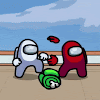One of the most popular recent approaches seems to be adding a pseudo-TV aspect to photographs, commonly known as Scanlines. Here's a quick and dirty technique to give a tech/gritty vibe to your picture. A number of movie posters and high-tech images employ this method. Continue reading for a step-by-step guide on how to quickly and simply construct scanlines. First, choose your picture. Images with high contrast work best, but any picture can suffice. Here's a very uninteresting product shot. But for a Web site splash page, we need to add a little bit to liven it up. The first step is to ensure that you are working at 300 dpi. This approach will work at 72 dpi, but the result will be different. You may reduce the size afterwards. Make a new layer. To return to black and white, press D. To fill the new layer with white, press Command + Delete (or Backspace on certain keyboards). Choose 1 for size, 50 for contrast, and Line for pattern type under Filter>Sketch>Halftone Pattern. This is how your picture should look:
A CRT computer monitor works on the most basic level by using a tube that has several pixels that are organized in a series of horizontal lines across the screen. These lines are counted to determine the vertical resolution of such a screen; an SDTV typically has 525 visible lines and 525 hidden lines. Each of these lines is known as a scan line. The picture on a screen is formed by appropriately illuminating the pixels of each line with electrons that flow from a filament at the rear of the monitor or TV set toward the screen. Traditional display systems such as TVs have been one of the principal uses of raster scanning technology.
I'm not going to pay someone $50 for just one basic effect. That would be a tremendous rip-off. BTW, nice shameless plug. That would be the first problem with the items I discovered at the shop. The second difficulty with retail purchases is that I don't know for sure whether the result will look exactly how I want until I buy it, and if it doesn't, I'm out of luck. If I had someone who could do it, I'd simply pay them $10 to code it since it's something that anybody with shader understanding could accomplish in around 30 minutes or less. While I can write in C, I am not familiar with CG Shader; else, I would do it myself. (Although I am interested in studying it.)
Because it is determined by how quickly the electromagnetic deflection system can reverse the current flowing in the deflection coil in order to move the electron beam from one side of the display to the other, the horizontal scan rate is one of the primary figures determining the resolution capability of a CRT. Faster current reversal necessitates higher voltages, which necessitates more costly electrical components. The horizontal frequency in analog television systems is between 15.625 kHz and 15.750 kHz. [1]


















